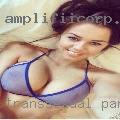
Obviously this site alows you to express your private tendencies but i like a woman who know what they want and like being naughty little sluts. If hungry i
can always go for tapas appetizers of all sorts. For the most par. Divorced and clean in Jacksonville. No falling asleep right after
sex if it's over we get our moms asses up and go home.


















